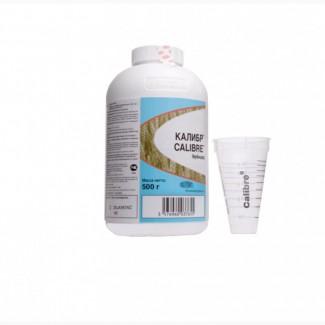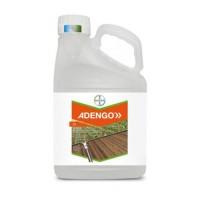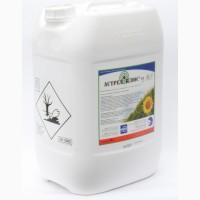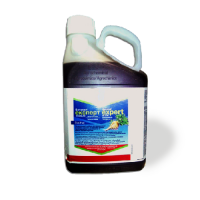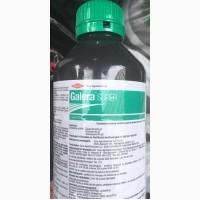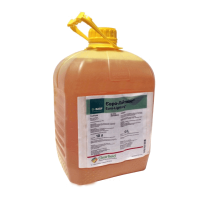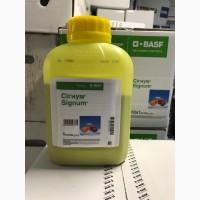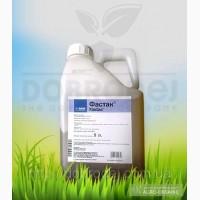Sell / buy
Buy Kalibr herbicide, Kirovohrad region.
Price187.76$
Region:all of Ukraine,
Kirovohrad region.
(Kropivnytskyi )
Updated:
The harvest of grain crops is one of the profit indicators not only of a specific agricultural enterprise, but also of the entire country . Therefore, obtaining a high-quality and ecologically clean product in the maximum possible quantity is a priority task of all agricultural companies. It usually takes a lot of effort to meet these strict limits. But, thanks to Caliber Herbicide from DUPONT, crops will be under full control without undue expenditure of time and money.
Main virtues
The main pests of grain crops in the fields are dicotyledonous weeds. Herbicide Kalibr (Herbicide Kalibr, Ukrainian) is able to exert a depressing effect on the entire range of specified plants, including the most problematic of them - thistle (species), thistle (species), ragweed, quinoa, field bindweed, tenacious nightshade, and others, while maintaining a precise selective effect to culture The unique property of the drug effectively decomposes in the soil, which makes it possible to start growing any other agricultural crops after harvesting the grain, without any restrictions. The ability to use Kalibr Herbicide between growth stages from tillering to tube emergence, sometimes up to the formation of a flag leaf, ensures the highest protection effectiveness and high yield. At the same time, the culture itself is not harmed, which is confirmed by the absence of drug residues in straw and grain after harvesting. Two active ingredients from the chemical class of sulfonylureas - thifensulfuron-methyl and tribenuron-methyl in a well-chosen combination have a systemic effect on weeds. The guaranteed result of spraying provides the opening of opportunities for grain crops and a significant increase in yield.
The working principle of Calibr Herbicide
Absorbed through the leaves, active substances move along the weeds to the so-called growth point. There, the synthesis of essential acids is stopped by blocking a special enzyme responsible for the process just 3 hours after spraying. Consequently, cell division does not occur, the sensitive plant dies. The results of the application of the herbicide can be assessed already 5-10 days after the treatment was carried out - noticeable chlorosis, partial necrosis of weeds. They will completely cease to exist by 15-21 days. Cool weather relatively slows down the effect of the drug, it is best to use it on wet and warm days. The use of the herbicide together with PAV TREND 90 contributes to the fact that the maximum absorption of the drug occurs without losses. This substance holds the drops of the solution on the leaves until they are completely absorbed, as a result of which the weeds are killed more efficiently and without the need to increase the concentration of the active drug. Herbicide Kalibr is suitable for use in tank mixtures - most of it isfungicides andinsecticides, which have the corresponding permission for use for the protection of this type of crop, except organophosphorus. Sequential use of herbicide and partner drug is possible. It is also allowed to use with other approved herbicides that protect against cereal weeds in full working order.
General information on application
Kalibr herbicide is effective both for the protection of spring and winter crops. The normative value of the concentration is 30 g/ha-50 g/ha, depending on the typical plants harmful to the specific field, the degree of weeding by them and the stage of growth they are at. Optimum spraying in the following concentrations of Herbicide Caliber: 30 g/ha – the field is infested with annual dicotyledonous pests at the 2-6 leaf development stage, thistles and thistles in the rosette state; 40 g/ha - among other weeds, veronica, marigold, violet, ragweed, nightshade (up to 4 whorls), cypress,sunflower weed, and others are found; 50 g/ha – the maximum allowable amount is used in cases of field bindweed (up to 15 cm), blue cornflower (up to 5 cm), podmarennik (up to 6 coils) or in very difficult field conditions. Caliber herbicide shows excellent results against weeds that are resistant to 2,4-D, MCPA and 2M-4X. Processing is preferably carried out in the period of formation of 2-3 leaves before sowing and before weeding or in the first phases of weed formation. In hot weather, it is strongly recommended to use 200 ml/ha of PAV TREND 90. The total consumption of liquid for spraying is from 200 l/ha to 300 l/ha, with air treatment no more than 50 l/ha - 75 l/ha. The solution must be prepared exclusively on the day of treatment. If the sowing of grains is under stress due to frost, drought and other adverse conditions, the drug should be used extremely carefully. Also, the herbicide is not used if precipitation is expected within two to three hours after the scheduled time of crop processing. This recommendation also applies to the option when the plants are already soaked after rain or dew.(//tractor-service.com)
List of weeds sensitive to Caliber Herbicide
Due to its specificity - protection against dicotyledonous weeds, it is logical that all monocotyledons will not show sensitivity to the drug. The herbicide also causes an insufficient reaction in pharmacy smoke. Otherwise, observing the conditions of use of the drug ensures the maximum degree of suppression and elimination of harmful plants. Weeds that react the most are field nasturtium, thistle (species), smolyovka (species), field sorrel, common cocklebur, double row (species), chamomile (species), cruciferous grass (species), samoseika rapeseed, sloe quinoa, tenacious nightshade, highlanders ( species), samoseika sunflower, field cuff, jasnotka (species), medicinal gorse, zaprokytsa zaprokinutaya, pikulki (species), sorrel (species), shepherd's bag, field forget-me-not, vetch (species), blue cornflower, medium starwort, common warthog, white marjoram, field sedum, samosa poppy, buttercup field, deskurenia (species), field thistle, wild carrot, field mint, field mustard, wild radish. Harmful plants with an average degree of sensitivity - Dandelion apothecary, bifora radiata, violet (species), three-parted row, veronica (species), field bindweed, sparrow (species), chrysanthemum (species), nightshade black, geranium species.
Description of herbicide
Active substances: 500 g/kg thifensulfuron-methyl + 250 g/kg tribenuron-methyl
Chemical class: sulfonylureas
Preparative form: water-dispersible granules
Packaging: plastic can 500 g
Shelf life: 3 years
Main virtues
The main pests of grain crops in the fields are dicotyledonous weeds. Herbicide Kalibr (Herbicide Kalibr, Ukrainian) is able to exert a depressing effect on the entire range of specified plants, including the most problematic of them - thistle (species), thistle (species), ragweed, quinoa, field bindweed, tenacious nightshade, and others, while maintaining a precise selective effect to culture The unique property of the drug effectively decomposes in the soil, which makes it possible to start growing any other agricultural crops after harvesting the grain, without any restrictions. The ability to use Kalibr Herbicide between growth stages from tillering to tube emergence, sometimes up to the formation of a flag leaf, ensures the highest protection effectiveness and high yield. At the same time, the culture itself is not harmed, which is confirmed by the absence of drug residues in straw and grain after harvesting. Two active ingredients from the chemical class of sulfonylureas - thifensulfuron-methyl and tribenuron-methyl in a well-chosen combination have a systemic effect on weeds. The guaranteed result of spraying provides the opening of opportunities for grain crops and a significant increase in yield.
The working principle of Calibr Herbicide
Absorbed through the leaves, active substances move along the weeds to the so-called growth point. There, the synthesis of essential acids is stopped by blocking a special enzyme responsible for the process just 3 hours after spraying. Consequently, cell division does not occur, the sensitive plant dies. The results of the application of the herbicide can be assessed already 5-10 days after the treatment was carried out - noticeable chlorosis, partial necrosis of weeds. They will completely cease to exist by 15-21 days. Cool weather relatively slows down the effect of the drug, it is best to use it on wet and warm days. The use of the herbicide together with PAV TREND 90 contributes to the fact that the maximum absorption of the drug occurs without losses. This substance holds the drops of the solution on the leaves until they are completely absorbed, as a result of which the weeds are killed more efficiently and without the need to increase the concentration of the active drug. Herbicide Kalibr is suitable for use in tank mixtures - most of it isfungicides andinsecticides, which have the corresponding permission for use for the protection of this type of crop, except organophosphorus. Sequential use of herbicide and partner drug is possible. It is also allowed to use with other approved herbicides that protect against cereal weeds in full working order.
General information on application
Kalibr herbicide is effective both for the protection of spring and winter crops. The normative value of the concentration is 30 g/ha-50 g/ha, depending on the typical plants harmful to the specific field, the degree of weeding by them and the stage of growth they are at. Optimum spraying in the following concentrations of Herbicide Caliber: 30 g/ha – the field is infested with annual dicotyledonous pests at the 2-6 leaf development stage, thistles and thistles in the rosette state; 40 g/ha - among other weeds, veronica, marigold, violet, ragweed, nightshade (up to 4 whorls), cypress,sunflower weed, and others are found; 50 g/ha – the maximum allowable amount is used in cases of field bindweed (up to 15 cm), blue cornflower (up to 5 cm), podmarennik (up to 6 coils) or in very difficult field conditions. Caliber herbicide shows excellent results against weeds that are resistant to 2,4-D, MCPA and 2M-4X. Processing is preferably carried out in the period of formation of 2-3 leaves before sowing and before weeding or in the first phases of weed formation. In hot weather, it is strongly recommended to use 200 ml/ha of PAV TREND 90. The total consumption of liquid for spraying is from 200 l/ha to 300 l/ha, with air treatment no more than 50 l/ha - 75 l/ha. The solution must be prepared exclusively on the day of treatment. If the sowing of grains is under stress due to frost, drought and other adverse conditions, the drug should be used extremely carefully. Also, the herbicide is not used if precipitation is expected within two to three hours after the scheduled time of crop processing. This recommendation also applies to the option when the plants are already soaked after rain or dew.(//tractor-service.com)
List of weeds sensitive to Caliber Herbicide
Due to its specificity - protection against dicotyledonous weeds, it is logical that all monocotyledons will not show sensitivity to the drug. The herbicide also causes an insufficient reaction in pharmacy smoke. Otherwise, observing the conditions of use of the drug ensures the maximum degree of suppression and elimination of harmful plants. Weeds that react the most are field nasturtium, thistle (species), smolyovka (species), field sorrel, common cocklebur, double row (species), chamomile (species), cruciferous grass (species), samoseika rapeseed, sloe quinoa, tenacious nightshade, highlanders ( species), samoseika sunflower, field cuff, jasnotka (species), medicinal gorse, zaprokytsa zaprokinutaya, pikulki (species), sorrel (species), shepherd's bag, field forget-me-not, vetch (species), blue cornflower, medium starwort, common warthog, white marjoram, field sedum, samosa poppy, buttercup field, deskurenia (species), field thistle, wild carrot, field mint, field mustard, wild radish. Harmful plants with an average degree of sensitivity - Dandelion apothecary, bifora radiata, violet (species), three-parted row, veronica (species), field bindweed, sparrow (species), chrysanthemum (species), nightshade black, geranium species.
Description of herbicide
Active substances: 500 g/kg thifensulfuron-methyl + 250 g/kg tribenuron-methyl
Chemical class: sulfonylureas
Preparative form: water-dispersible granules
Packaging: plastic can 500 g
Shelf life: 3 years
|
Shop, contacts | |
Olexii/ отзывы, информация| ||178 / activity evaluation | |
|
Phone:
+380xxxxxx
show
| |
ID объявления: #832720
(added by a registered user, registration date: 07-18-2018)
Added/Updated: 05-03-2024 10:43 (relevant, until: 03-05-2025)
Permanent ad address:
Showed / watched for today: ?, total: ?
Similar ads
Among them there are many interesting...
